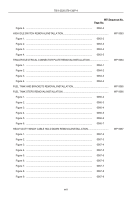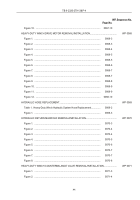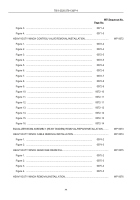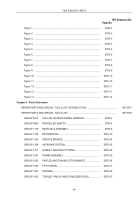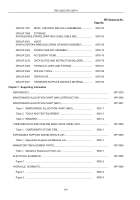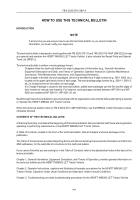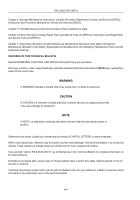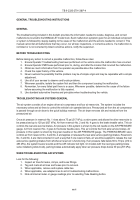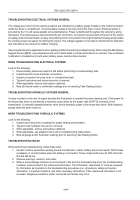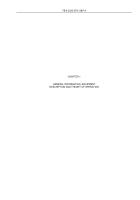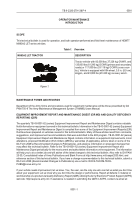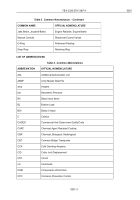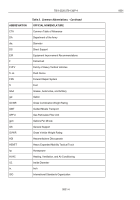TB-9-2320-279-13-P-4 - Page 44 of 744
TROUBLESHOOTING ELECTRICAL SYSTEMS GENERAL
The voltage and current for the electrical system are indicated by a battery gauge located on the instrument panel
inside the driver's compartment. Circuit breakers located in the cab protect the main circuits. Electrical power is
provided by four 12-volt series-parallel connected batteries. Power is distributed throughout the vehicle by wiring
harnesses. The harnesses are interconnected by pin connectors. Connectors are provided at the rear of the vehicle
to supply power for towed loads. A heavy-duty starting motor is mounted on the engine flywheel housing and provides
the cranking power necessary for starting the engine. The voltage regulator is mounted on the belt driven alternator
and maintains a 24-volt level for battery charging.
Use jumperwires when applicable to aid in isolating malfunctions during troubleshooting. When using the Maintainers
Support Device (MSD), use jumperwires with red or black leads to access all locations on vehicles. Use a standard
multimeter to troubleshoot circuits when battery power must be disconnected.
WHEN TROUBLESHOOTING ELECTRICAL SYSTEMS
Look for the following:
1. Ensure battery disconnect switch is ON before performing a troubleshooting task.
2. Inspect wires for loose electrical connections.
3. Inspect connectors for loose, bent, or corroded terminals.
4. Tag and mark wires and connectors prior to removal.
5. When applicable, remove and replace cable ties.
6. Note all internal meter or multimeter readings prior to selecting Take Reading button.
TROUBLESHOOTING HYDRAULIC SYSTEMS GENERAL
A pump mounted on the rear of engine provides the fluid power to operate the power steering only. Fluid power for
the heavy-duty winch is provided by a hydraulic pump driven by the power take-off (PTO) mounted on the
transmission. A manually-operated selector valve directs hydraulic power to the heavy-duty winch. Both hydraulic
pumps share the same reservoir.
WHEN TROUBLESHOOTING HYDRAULIC SYSTEMS
Look for the following:
1. Inspect quick disconnect couplings for proper seating and operation.
2. Tag and mark hydraulic lines prior to removal.
3. When applicable, remove and replace cable ties.
4. When applicable, use adapter lines to aid in troubleshooting malfunctions.
5. Note all gauge and/or flowmeter readings prior to selecting Take Reading button.
TROUBLESHOOTING RULES
When performing troubleshooting, follow these rules:
1. Caution must be used when working around the alternator, starter, battery disconnect switch, NATO slave
receptacle, or circuit breakers when the battery is connected. These components have 24 VDC terminals
that will still be live.
2. Observe warnings, cautions, and notes.
3. When a work package reference is encountered in the text of a troubleshooting track, the troubleshooting
mechanic must proceed to the referenced information. The information “referenced to” must be reviewed
for information as it pertains to the troubleshooting procedures (i.e.: procedures, safety and caution
information, component locations, and other necessary information). If this referenced information is not
reviewed, dangerous situations and/or inaccurate test results may occur.
TB 9-2320-279-13&P-4
xxviii
Back to Top

